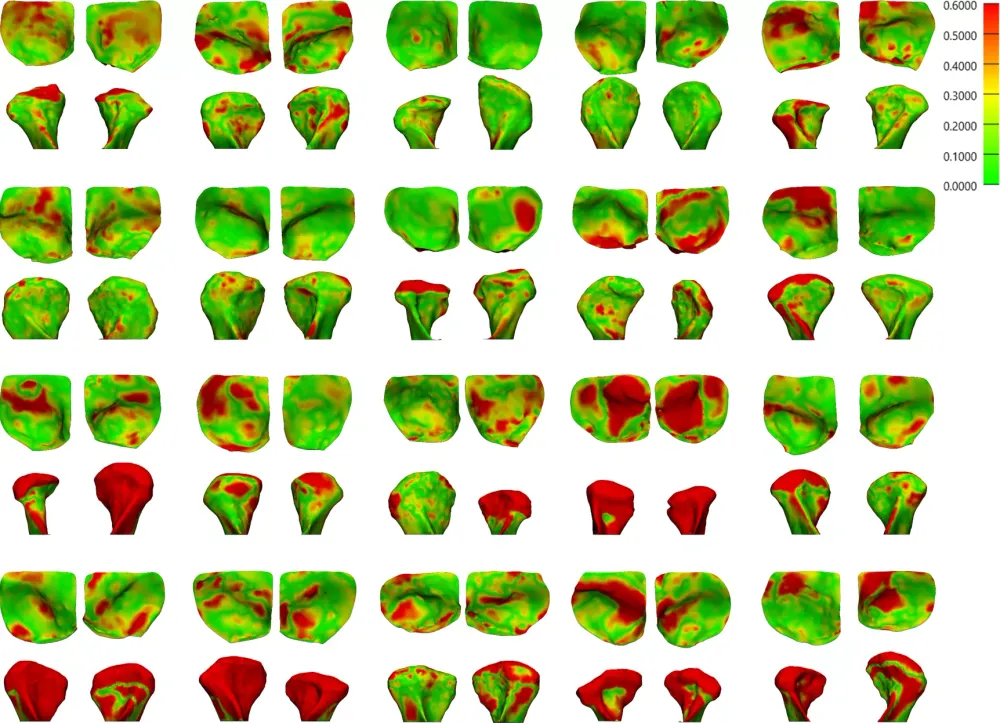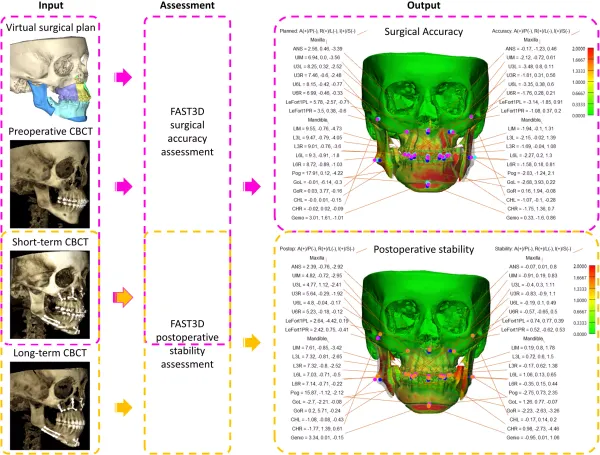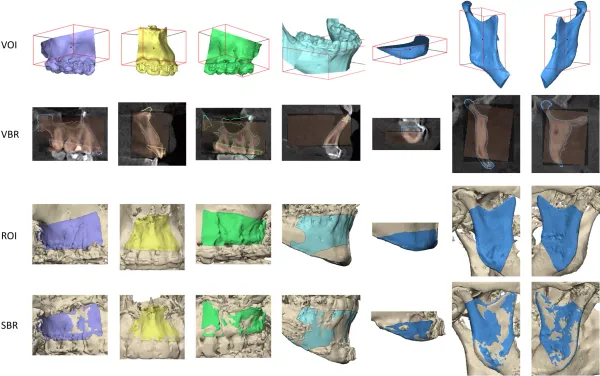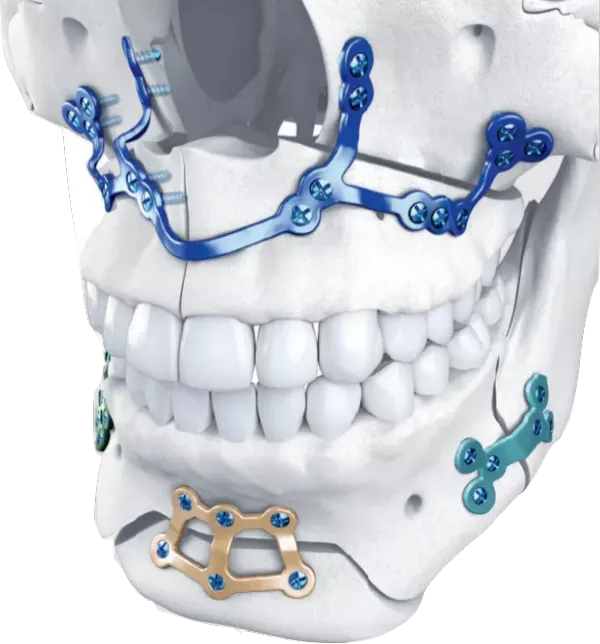Correlation Between Condylar, Glenoid Fossa and joint Space Changes Two Years After Bimaxillary Orthognathic Surgery in Class II Subjects
Authors
Holte MB, Pinholt EM
https://www.sciencedirect.com/science/article/pii/S2667147623000717
Abstract
Objectives
The position of the mandible after an orthognathic surgical procedure is believed to be dependent on adaptive condylar and glenoid fossa changes, in addition to condylar positional changes within the fossa. The purpose of this study was to evaluate the association between condylar and glenoid fossa changes and the positional changes in the joint space two years after bimaxillary surgery.
Methods
The condyles and glenoid fossae were reconstructed from a pair of superimposed pre- and postoperative (two years) cone-beam computerized tomography scans. The surface models were spatially divided into four regions. Three-dimensional morphological and positional changes were measured as volumetric differences and surface distances between the pre- and postoperative condylar and glenoid fossa regions. Statistical associations of condylar, glenoid fossa and joint space changes were calculated by Pearson's correlation coefficient.
Results
Twenty subjects (sixteen female; four male; mean age 27.6 years) with class II malocclusion and maxillomandibular retrognathia, who underwent bimaxillary surgery, were assessed. A strong and statistically significant correlation between condylar and glenoid fossa changes was observed two years after surgery (r = 0.52, p < 0.001). The correlation was strongest and statistically significant anterior-medially (r = 0.48, p = 0.002) and anterior-laterally (r = 0.38, p = 0.015). Condylar changes were significantly correlated with the increase in the posterior-medial (r = 0.37, p < 0.020) and the posterior-lateral (r = 0.45, p < 0.003) joint space distances.
Conclusion
Changes of the condyle, the glenoid fossa and the joint space following bimaxillary surgery were significantly correlated in these class II subjects.





